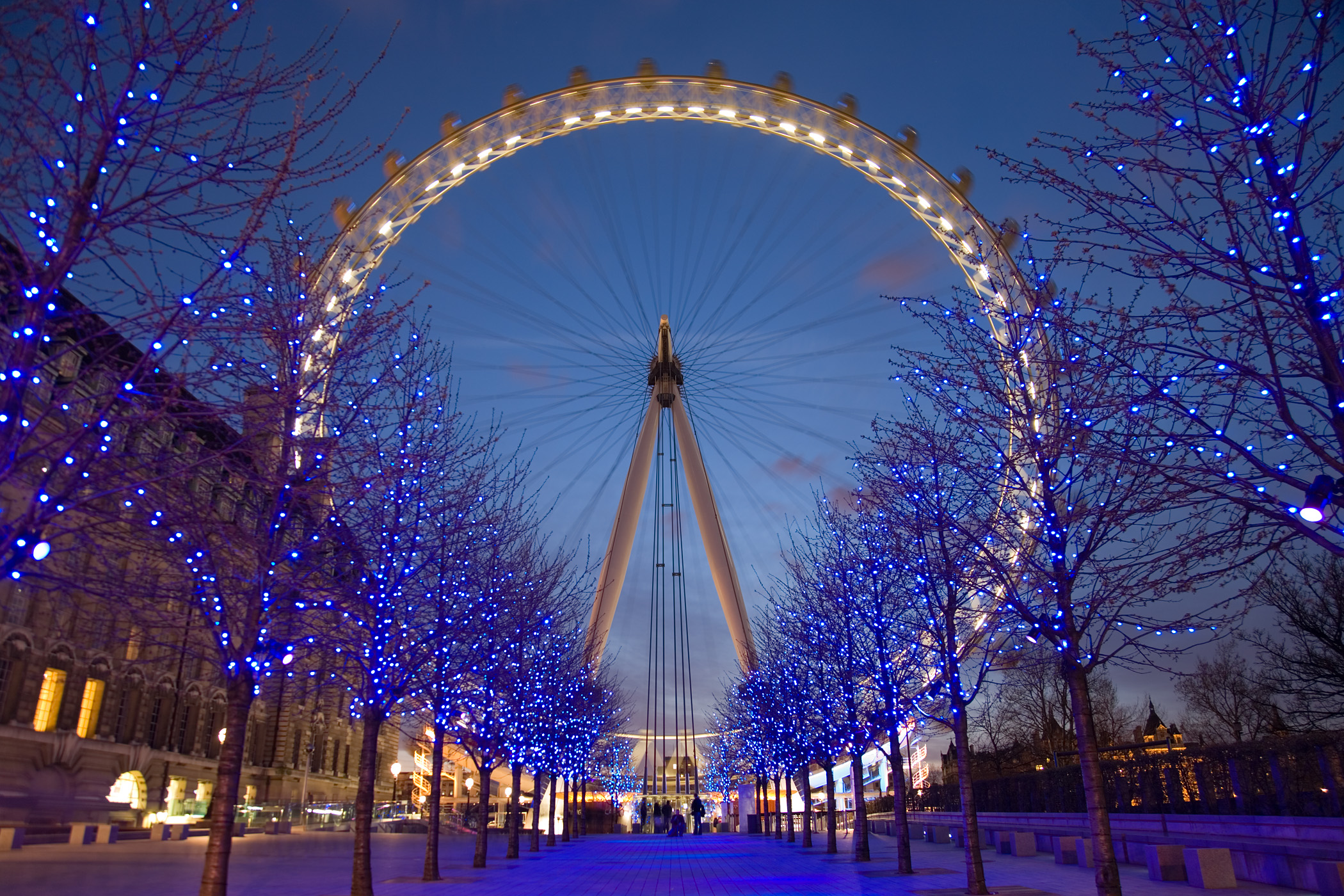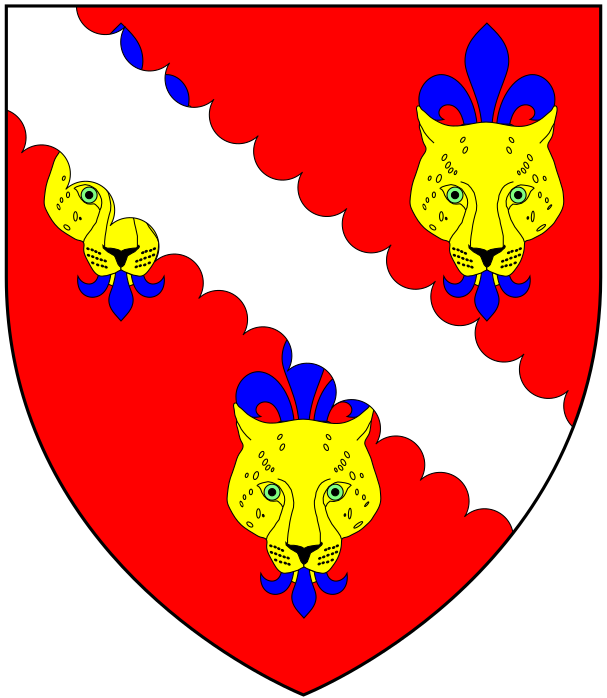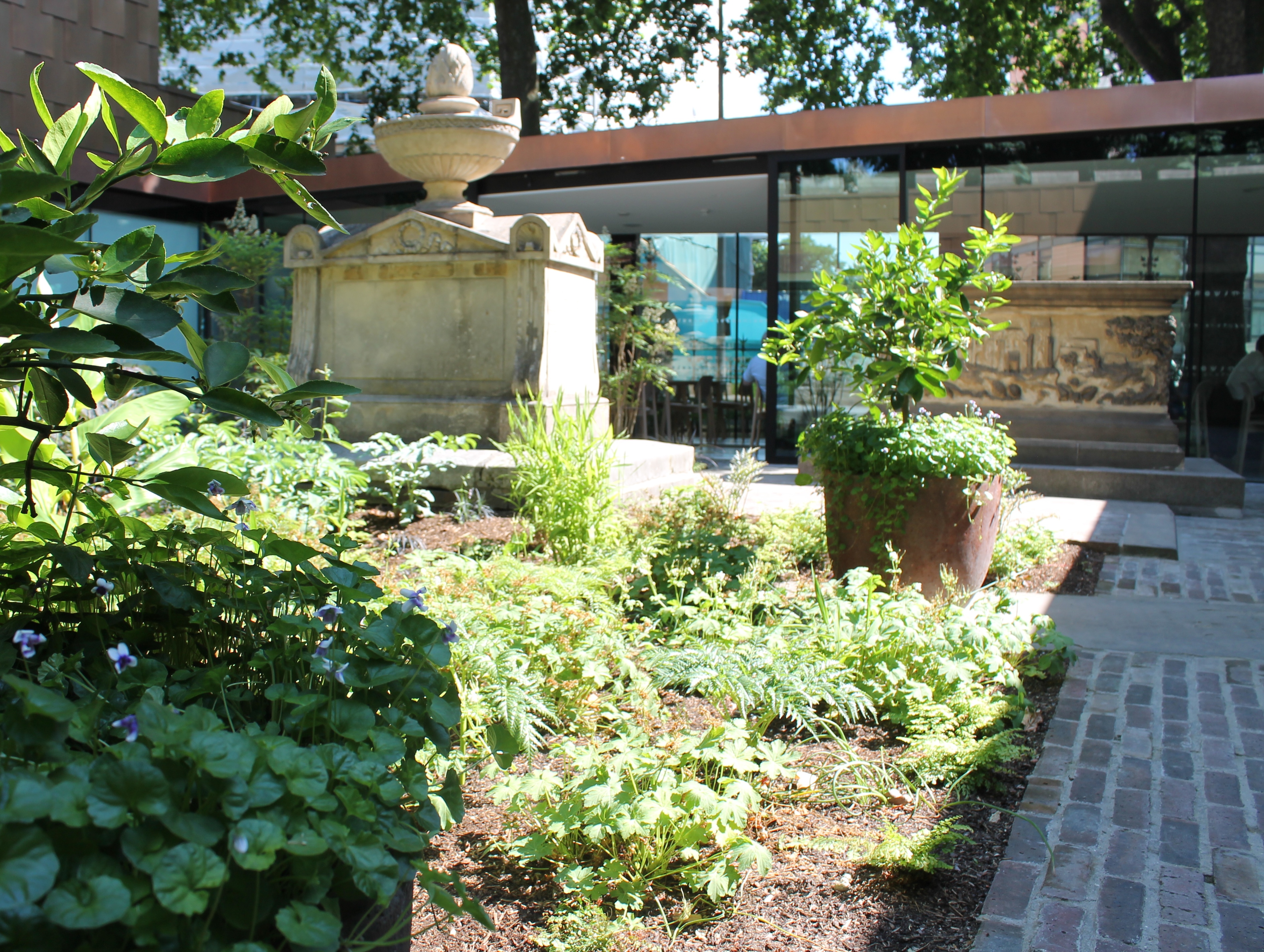|
Old Paradise Gardens
Old Paradise Gardens (formerly known as Lambeth High Street Recreation Ground, and informally as the Rec) is a park in Lambeth in the London Borough of Lambeth in London, England, and opened to the public in 1884. Before it became a park, it was a burial ground of St. Mary's Church, Lambeth from 1703 to 1853. Burial ground By the early 18th-century the churchyard of St Mary's, Lambeth was full. In order to provide an alternate burial ground for the parish, Archbishop Tenison acquired a market garden in 1703 for the sum of £120. It was consecrated in 1705. It was extended in 1814, and the extension was consecrated in 1816. A watch house was erected in 1825. The burial ground closed in 1853. Public garden By 1880 the former burial ground was unsightly, and the Lambeth vestry decided to turn it into a public garden, which opened in 1884. In 1929 the recreation ground was extended with the acquisition of the site of a glass bottle factory in Whitgift Street. However, by the 19 ... [...More Info...] [...Related Items...] OR: [Wikipedia] [Google] [Baidu] |
Lambeth
Lambeth () is a district in South London, England, in the London Borough of Lambeth, historically in the County of Surrey. It is situated south of Charing Cross. The population of the London Borough of Lambeth was 303,086 in 2011. The area experienced some slight growth in the medieval period as part of the manor of Lambeth Palace. By the Victorian era the area had seen significant development as London expanded, with dense industrial, commercial and residential buildings located adjacent to one another. The changes brought by World War II altered much of the fabric of Lambeth. Subsequent development in the late 20th and early 21st centuries has seen an increase in the number of high-rise buildings. The area is home to the International Maritime Organization. Lambeth is home to one of the largest Lusophone, Portuguese-speaking communities in the UK, and is the second most commonly spoken language in Lambeth after English language, English. History Medieval The origins of the ... [...More Info...] [...Related Items...] OR: [Wikipedia] [Google] [Baidu] |
London Borough Of Lambeth
Lambeth () is a London boroughs, London borough in South London, England, which forms part of Inner London. Its name was recorded in 1062 as ''Lambehitha'' ("landing place for lambs") and in 1255 as ''Lambeth''. The geographical centre of London is at Frazier Street near Lambeth North tube station, though nearby Charing Cross on the other side of the Thames in the City of Westminster is traditionally considered the centre of London. History Origins Lambeth was part of the large ancient parish of Lambeth (parish), Lambeth St Mary, the site of the archepiscopal Lambeth Palace, in the Brixton (hundred), hundred of Brixton in the county of Surrey. It was an elongated north–south parish with of River Thames frontage opposite the cities of City of London, London and City and Liberty of Westminster, Westminster. Lambeth became part of the Metropolitan Police District in 1829. It remained a parish for English Poor Laws, Poor Law purposes after the Poor Law Amendment Act 1834, and w ... [...More Info...] [...Related Items...] OR: [Wikipedia] [Google] [Baidu] |
London
London is the capital and largest city of England and the United Kingdom, with a population of just under 9 million. It stands on the River Thames in south-east England at the head of a estuary down to the North Sea, and has been a major settlement for two millennia. The City of London, its ancient core and financial centre, was founded by the Romans as '' Londinium'' and retains its medieval boundaries.See also: Independent city § National capitals The City of Westminster, to the west of the City of London, has for centuries hosted the national government and parliament. Since the 19th century, the name "London" has also referred to the metropolis around this core, historically split between the counties of Middlesex, Essex, Surrey, Kent, and Hertfordshire, which largely comprises Greater London, governed by the Greater London Authority.The Greater London Authority consists of the Mayor of London and the London Assembly. The London Mayor is distinguished fr ... [...More Info...] [...Related Items...] OR: [Wikipedia] [Google] [Baidu] |
Thomas Tenison
Thomas Tenison (29 September 163614 December 1715) was an English church leader, Archbishop of Canterbury from 1694 until his death. During his primacy, he crowned two British monarchs. Life He was born at Cottenham, Cambridgeshire, the son and grandson of Anglican clergymen, who were both named John Tenison; his mother was Mercy Dowsing. He was educated at Norwich School, going on to Corpus Christi College, Cambridge, as a scholar on Archbishop Matthew Parker's foundation. He graduated in 1657, and was chosen fellow in 1659. For a short time he studied medicine, but in 1659 was privately ordained. As curate of St Andrew the Great, Cambridge from 1662, he set an example by his devoted attention to the sufferers from the plague. In 1667 he was presented to the living of Holywell-cum-Needingworth, Huntingdonshire, by the Earl of Manchester, to whose son he had been tutor, and in 1670 to that of St Peter Mancroft, Norwich. In 1680 he received the degree of Doctor of Divinity, an ... [...More Info...] [...Related Items...] OR: [Wikipedia] [Google] [Baidu] |
Lambeth High Street Recreation Ground - Geograph
Lambeth () is a district in South London, England, in the London Borough of Lambeth, historically in the County of Surrey. It is situated south of Charing Cross. The population of the London Borough of Lambeth was 303,086 in 2011. The area experienced some slight growth in the medieval period as part of the manor of Lambeth Palace. By the Victorian era the area had seen significant development as London expanded, with dense industrial, commercial and residential buildings located adjacent to one another. The changes brought by World War II altered much of the fabric of Lambeth. Subsequent development in the late 20th and early 21st centuries has seen an increase in the number of high-rise buildings. The area is home to the International Maritime Organization. Lambeth is home to one of the largest Portuguese-speaking communities in the UK, and is the second most commonly spoken language in Lambeth after English. History Medieval The origins of the name of Lambeth come from it ... [...More Info...] [...Related Items...] OR: [Wikipedia] [Google] [Baidu] |
Metropolitan Public Gardens Association
The Metropolitan Public Gardens Association (also known as the MPGA) is a charity in London for the purposes of the preservation of public parks and gardens, established in 1882. It facilitated the creation of new public open spaces, including from philanthropic landowners within its membership. The MPGA was involved in the formation and development of other amenity organisations. The charity still exists; in recent decades its emphasis has changed to smaller parcels of land and smaller projects within larger spaces, as well as to themed projects. The MPGA was the starting point for the careers of the ground-breaking female landscape gardeners Fanny Wilkinson and Madeline Agar. History The Irish philanthropist Lord Brabazon (who, from 1887, was the 12th Earl of Meath) wanted to make more effort than the Kyrle Society (of which he was a member) was able to do to capitalise on the Metropolitan Open Spaces Act 1881. The Kyrle Society had been formed in 1876. The 1881 Act, which h ... [...More Info...] [...Related Items...] OR: [Wikipedia] [Google] [Baidu] |
Stone 'Watch House 1825' - Geograph
In geology, rock (or stone) is any naturally occurring solid mass or aggregate of minerals or mineraloid matter. It is categorized by the minerals included, its chemical composition, and the way in which it is formed. Rocks form the Earth's outer solid layer, the crust, and most of its interior, except for the liquid outer core and pockets of magma in the asthenosphere. The study of rocks involves multiple subdisciplines of geology, including petrology and mineralogy. It may be limited to rocks found on Earth, or it may include planetary geology that studies the rocks of other celestial objects. Rocks are usually grouped into three main groups: igneous rocks, sedimentary rocks and metamorphic rocks. Igneous rocks are formed when magma cools in the Earth's crust, or lava cools on the ground surface or the seabed. Sedimentary rocks are formed by diagenesis and lithification of sediments, which in turn are formed by the weathering, transport, and deposition of existing rocks. M ... [...More Info...] [...Related Items...] OR: [Wikipedia] [Google] [Baidu] |
Grave Stones - Geograph
A grave is a location where a dead body (typically that of a human, although sometimes that of an animal) is buried or interred after a funeral. Graves are usually located in special areas set aside for the purpose of burial, such as graveyards or cemeteries. Certain details of a grave, such as the state of the body found within it and any objects found with the body, may provide information for archaeologists about how the body may have lived before its death, including the time period in which it lived and the culture that it had been a part of. In some religions, it is believed that the body must be burned or cremated for the soul to survive; in others, the complete decomposition of the body is considered to be important for the rest of the soul (see bereavement). Description The formal use of a grave involves several steps with associated terminology. ;Grave cut The excavation that forms the grave.Ghamidi (2001)Customs and Behavioral Laws Excavations vary from a sha ... [...More Info...] [...Related Items...] OR: [Wikipedia] [Google] [Baidu] |
Grade II Listed
In the United Kingdom, a listed building or listed structure is one that has been placed on one of the four statutory lists maintained by Historic England in England, Historic Environment Scotland in Scotland, in Wales, and the Northern Ireland Environment Agency in Northern Ireland. The term has also been used in the Republic of Ireland, where buildings are protected under the Planning and Development Act 2000. The statutory term in Ireland is " protected structure". A listed building may not be demolished, extended, or altered without special permission from the local planning authority, which typically consults the relevant central government agency, particularly for significant alterations to the more notable listed buildings. In England and Wales, a national amenity society must be notified of any work to a listed building which involves any element of demolition. Exemption from secular listed building control is provided for some buildings in current use for worship, ... [...More Info...] [...Related Items...] OR: [Wikipedia] [Google] [Baidu] |
Heritage At Risk Register
An annual ''Heritage at Risk Register'' is published by Historic England. The survey is used by national and local government, a wide range of individuals and heritage groups to establish the extent of risk and to help assess priorities for action and funding decisions. This heritage-at-risk data is one of the UK government's official statistics. ''Heritage at risk'' is term for cultural heritage assets that are at risk as a result of neglect, decay, or inappropriate development; or are vulnerable to becoming so. England's ''Heritage at Risk Register'' The ''Heritage at Risk Register'' covers: * Grade I and II* listed buildings (the baseline register is 1999); Grade II listed buildings in London only (the baseline register is 1991) * Structural scheduled monuments (base year is 1999) and scheduled monuments (base year is 2009) * Registered parks and gardens (base year is 2009) * Registered historic battlefields (base year is 2008) * Protected wreck sites * Conservation areas ... [...More Info...] [...Related Items...] OR: [Wikipedia] [Google] [Baidu] |
Garden Museum
The Garden Museum (formerly known as the Museum of Garden History) in London is Britain's only museum of the art, history and design of gardens. The museum re-opened in 2017 after an 18-month redevelopment project. The building is largely the Victorian reconstruction of the Church of St Mary-at-Lambeth which was deconsecrated in 1972 and was scheduled to be demolished. It is adjacent to Lambeth Palace on the south bank of the River Thames in London, on Lambeth Road. In 1976, John and Rosemary Nicholson traced the tomb of the two 17th-century royal gardeners and plant hunters John Tradescant the Elder and the Younger to the churchyard, and were inspired to create the Museum of Garden History.Tradescant Trust (1979) The Tradescant Story (London). It was the first museum in the world dedicated to the history of gardening. The Museum's main gallery is on the first floor, in the body of the church. The collection includes tools, art, and ephemera of gardening, including a gallery ... [...More Info...] [...Related Items...] OR: [Wikipedia] [Google] [Baidu] |
1884 Establishments In England
Events January–March * January 4 – The Fabian Society is founded in London. * January 5 – Gilbert and Sullivan's ''Princess Ida'' premières at the Savoy Theatre, London. * January 18 – Dr. William Price attempts to cremate his dead baby son, Iesu Grist, in Wales. Later tried and acquitted on the grounds that cremation is not contrary to English law, he is thus able to carry out the ceremony (the first in the United Kingdom in modern times) on March 14, setting a legal precedent. * February 1 – ''A New English Dictionary on historical principles, part 1'' (edited by James A. H. Murray), the first fascicle of what will become ''The Oxford English Dictionary'', is published in England. * February 5 – Derby County Football Club is founded in England. * March 13 – The siege of Khartoum, Sudan, begins (ends on January 26, 1885). * March 28 – Prince Leopold, the youngest son and the eighth child of Queen Victoria and Prince A ... [...More Info...] [...Related Items...] OR: [Wikipedia] [Google] [Baidu] |








